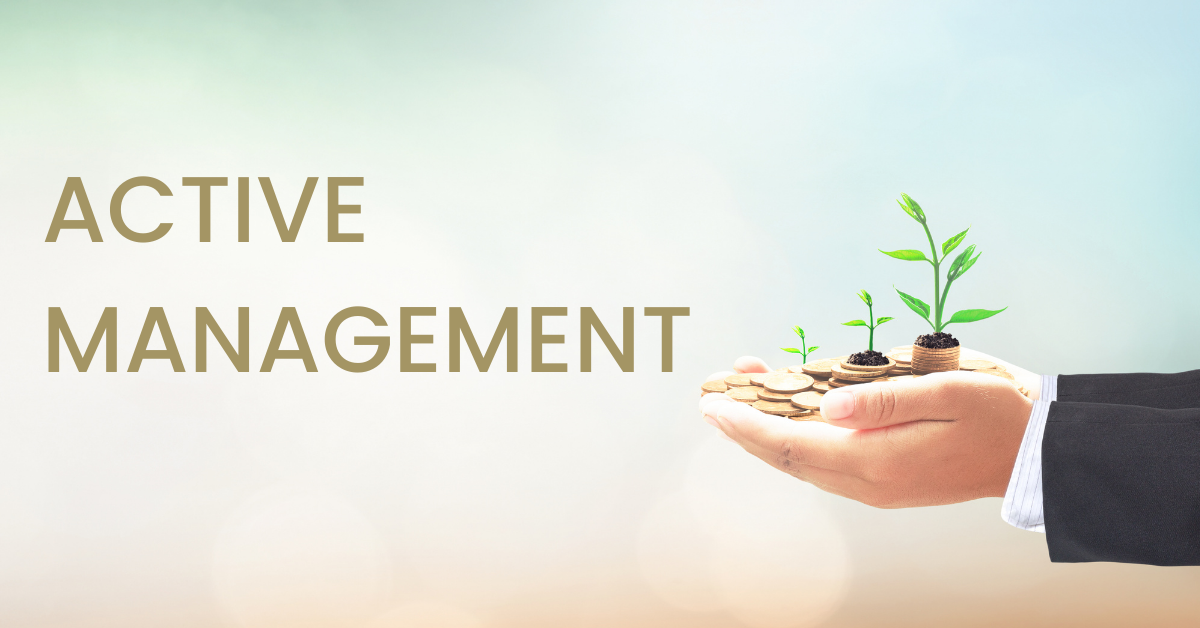Written by Catherine Bucki with Craig Brown from Rathbones contributing.
Active vs Passive Investment: What’s the Difference?
Generally speaking, there are two different methods to approach investment: passive and active management, with much debate between the two on which approach to take. What exactly is the difference between the two?
Passive Investment

Passive, or index-style investments, buy and hold the stocks or bonds in a market index such as the Standard & Poor’s 500 or the Dow Jones Industrial Average. If these indices change the stock within them, the index funds that follow them automatically switch their holdings at the rebalance date to match the updated indices. Thus, the stock that’s leaving is sold and the new stock entering the indices is purchased. When stock becomes part of one of these major indices, it can represent a major milestone for the company’s stock as it will become a core holding in many passive funds. The main benefit to passive investing is that the fees are lower.
Active Investment Management

Active investment is a “hands-on” approach where portfolios are managed by a portfolio manager or “active” participant. The goal of active management is to benefit from the ability to be selective in terms of the assets you own and the way you trade them to both manage risk but also attempt to beat a passive index approach.
Active management requires a much deeper understanding, knowledge and analysis of when to buy in and sell out of a particular bond, stock or asset. Typically a portfolio manager will oversee a team of analysts who look into both quantitative and qualitative factors to help determine the best course of action. This method of investment management requires a degree of confidence and conviction in what to buy but also how and why you might decide to sell an asset.
How does Passive investment measure up?
Passive funds are forced sellers in falling markets if they experience negative flows. They have to sell every holding, there is no discretion, taking the real-time price and losses become likely. If liquidity is poor, losses will be exacerbated.
Craig Brown, Senior Multi-Asset Investment Specialist at Rathbones notes that “We believe that having control over stock selection is important both over the long and the short term. Performance this year so far has been impacted as much by what you don’t own as what you do. Some big index constituents have had very difficult days of late and a purely passive investor will not have been able to shield from this.”
Craig also notes that he and the team believe that “Taking a longer-term view, passive investing could be less effective over the next five years as the rising cost of capital will create an even larger gulf between the strong and the weak.”
Why take an Active approach?
Being active allows investment managers to be more selective with investment opportunities, which can be particularly helpful in a volatile market. The volatility can be used to their advantage and a manager can selectively add to the companies they believe will become leaders in the long-term at cheaper valuations.
Being selective and active during volatility can be very helpful in generating long-term returns but also gives you the ability to avoid those companies where you may just be catching a falling knife as the falls are more justified.
Are there disadvantages of Passive Investment?
Passive equity is sensitive to momentum – the better a stock performs the larger its weight in the index (assuming a market capitalisation weighted index) and as a consequence the larger a passive investor’s exposure. When momentum reverses, which has been the case over the last few months or so, this can leave passive investors feeling the impact of their investments being skewed towards assets that are now seeing the most pain from that reversal.
The markets, a highlight
Passives can leave you with heavy exposure in one or a few sectors. Notably the FTSE 100 with exposure to banks, petroleum, and mining which have served the index well this year but was a drag in the previous 5 or more years. In the US, the S&P 500 has a much larger weighting in the Tech sector which has been an excellent performer in recent years but is now dragging that index down.
There will be times when these indices benefit from and suffer as a consequence of heavy exposure to one or several sectors. Being active enables you to manage sector risk and achieve some balance; limiting the volatility from the swings between value and growth investments while maximising any upside.
Duration and Risk Management

Let’s look at Fixed Income; being active in this space has arguably not been more important in decades. Here’s why.
Bond duration is a measurement of interest rate risk, indicating the sensitivity of a bond’s price to fluctuation in interest rates and the number of years in which an investor can recover the present value of the cash flows of a bond.
The higher the duration of a bond the more it will be impacted by moves in rates. If rates move higher then bonds typically fall in value because the fixed coupon (think interest rate) on that bond is now less attractive than it was before. Of course, bond yields will price in future expected movements too, hence why this year we have seen yields move a long way in anticipation of many rate rises as the year goes on and central banks work to combat inflation. A bond with many years of duration will see larger falls in that environment than a bond with a lower duration.
Bond indices have seen their duration pushed out materially as governments and companies have looked to term out their debt at lower rates. Passive bond investors have never been in a time where they have had to take so much rate risk for so little yield, leaving passive bond investors taking a huge amount of the pain from the rising yields we have seen because they are invested via indices with much more long-dated debt than in the past.
Craig explains that “Duration management has been a key determinant of the performance of multi-asset portfolios this year, particularly in the lowest risk part of the spectrum where bond exposure is highest. Having control of duration exposure is a crucial element of managing risk in a fixed income portfolio which passives do not possess.”
Typically, we have seen high-quality bonds, like government bonds, appreciate while equities have gone down and act as an offset to equity risk.
Taking the passive Multi-Asset approach; these funds are exposed to risks given that they use passive instruments with a typical asset allocation that only includes equities and bonds. In the current climate where bonds and equities have been falling together, these passive Multi-Asset approaches do not have any other available resources to protect portfolios.
This has become even more apparent as the lower one goes down the risk spectrum, where the low-risk passive multi-asset approaches have been the most negatively impacted because of their larger holdings in long-dated fixed income relative to active approaches which can determine the level of duration which they believe is appropriate.
There is an upside to Passive Investment
Although the Rathbones Multi-Asset team actively manages their funds and believes this approach is most appropriate over the long term, Craig does note that “There is a time and a place for passives though, the use of passives more tactically or to offer a cheaper exposure to a broad theme. ETF’s can also be useful to add to risk positions quickly and tactically assuming there is good liquidity.”
In volatile or uncertain times, a qualified financial planner can offer holistic planning and guidance to navigate towards financial wellbeing and independence. For more advice about active management and your investments please contact Finsbury Associates.

